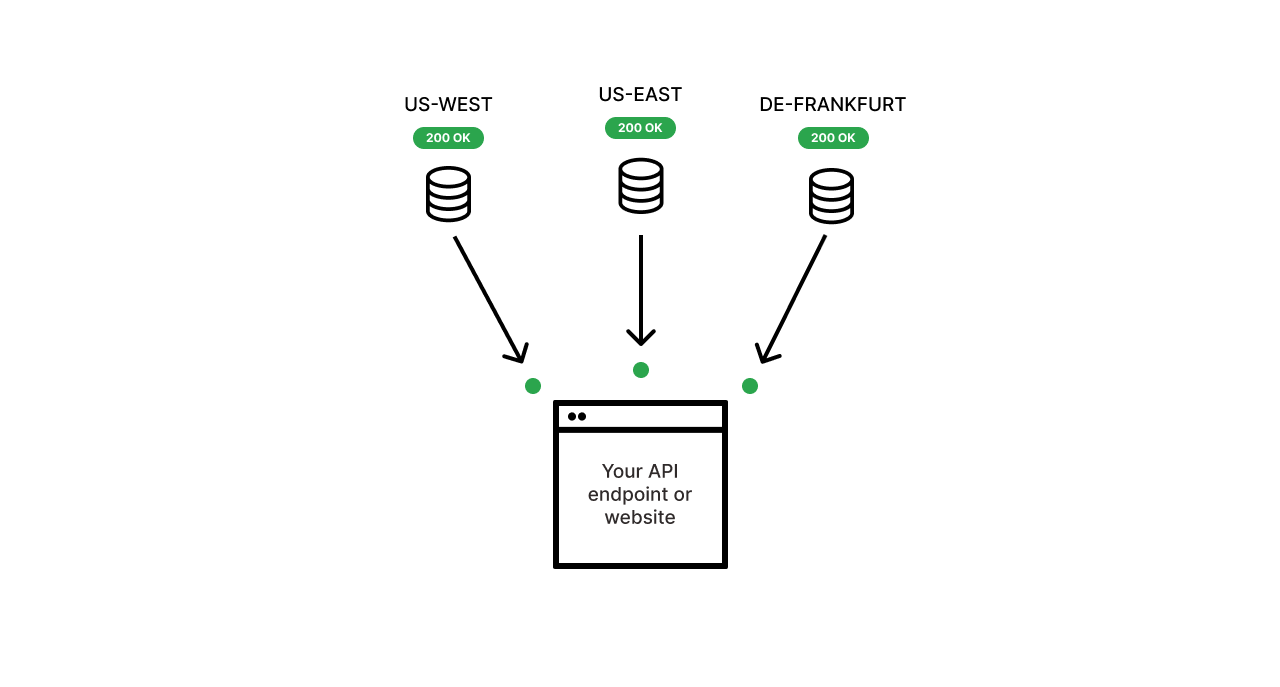How Proberix Works
Proberix operates through a network of strategically located nodes, each responsible for performing checks (referred to as probes) and reporting the results. Below is an overview of how Proberix functions:
Proberix operates by performing regular checks on websites or API endpoints from multiple geographic locations. This multi-location monitoring ensures that a service's performance is consistently evaluated across different regions, providing a comprehensive view of its availability and responsiveness.

Probes are automatically deployed across various predefined locations, such as US-WEST, US-EAST, and Germany (Frankfurt). Each location operates independently, running checks at regular intervals to assess the target service's status.
At each location, Proberix sends an HTTP request to the specified URL. This request gathers crucial data, including response time, HTTP status code, and content validation. Each location's results are recorded separately to account for regional variations in performance.
After completing the checks, each location sends its findings back to a central server. These results include the data collected during the check, such as response times and status codes.
The central server aggregates these results, comparing them to identify any discrepancies or issues. For example, if one location reports a slow response time or an error while others do not, the system can identify whether the problem is localized or widespread.
Based on the results from all locations, Proberix determines if an alert should be raised. If multiple locations detect an issue, an alert is generated, indicating a potential service disruption. This alert helps users respond quickly to resolve the issue.